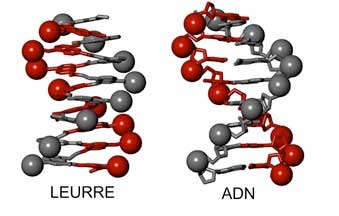Research Progress
Artificial molecules that mimic DNA
发布时间: 2018-04-09 15:35 点击:2209
| Not only can synthetic molecules imitate the structures of their biological counterparts, they can also assume their functions and even outcompete them. This has recently been demonstrated by researchers from the CNRS, Inserm and Bordeaux University, who have developed an artificial sequence mimicking the surface features of DNA for the first time. This artificial molecule is able to inhibit the activity of several DNA-binding enzymes, including the one used by HIV to insert its genome into that of its host cell. | |||||||||||||
|
These results, published on April 2, 2018 in Nature Chemistry ("Single helically folded aromatic oligoamides that mimic the charge surface of double-stranded B-DNA"), pave the way for new pharmacological tools based on inhibiting DNA–protein interactions.
|
Address: C508 Dingxin Building, Jilin University, 2699 Qianjin Street, Changchun 130012, P. R. China
Copyright © 2024 International Society of Bionic Engineering All Rights Reserved
吉ICP备11002416号-1
Copyright © 2024 International Society of Bionic Engineering All Rights Reserved
吉ICP备11002416号-1










